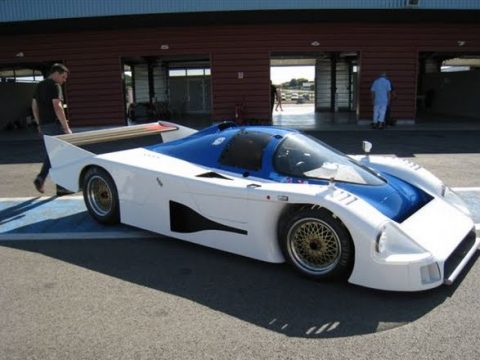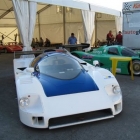The team was financed by a Swiss oil distribution company, Gatoil, and after seeing the performance of the EMKA, company owner, Monsieur Ghattes chose the Aston Martin Tickford V8 to power the new car. With its carbon-fibre monocoque, made by Advanced Composites in the UK, the Cheetah-Aston Martin promised low weight of only 870 kg which when combined with a 580 bhp Tickford engine should have given spectacular performance.
Sadly in its first race at Spa in the 1000 Km in 1984, the car retired. The following June, the was entered at Le Mans where it chased after almost 5 hours due to a wheel falling off following failure of the driveshaft. Following Le Mans, it was also entered into a further seven endurance races during the remainder of the year but failed to finish in all but one. The best ever result for the Cheetah was 10th in the 1985 Spa 1000 km.
Following a legal dispute, the car was purchased privately by a Swiss enthusiast, who was able to compete in a few German and Swiss Supercup races from 1988 to 1990 until the engine blow up and it remained unused at the back of the workshop. From 2006 on the car was finally rebuilt by a specialized company, Rechsteiner Racing SA near Lausanne, and completed in 2009.
A second Cheetah G604 also exists although it is nothing more than a show car and possesses no running gear or Aston Martin V8 engine. Finished with authentic blue and white coachwork, it is mounted on a rudimentary support frame rather than any form of carbon-fibre monocoque.
Photographs kindly provided by a previous owner of the car




















